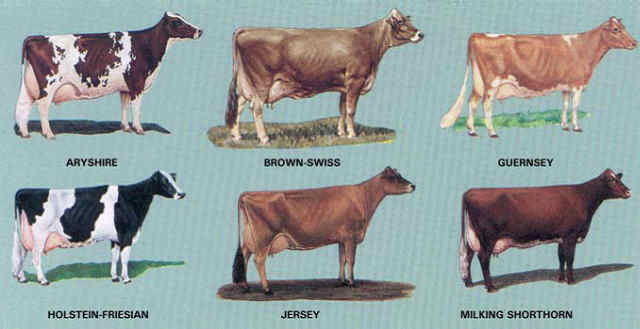
Breeding method
It is recommended that A.I. services are used for breeding dairy animals, but good and health bulls can be used where no A.I. services are available. Livestock production officers or other credible vet practitioners should be consulted if breed selection is a problem.
Age to Breed
A heifer should be ready for service by 18 months if growing well. Heifers can be served even earlier if they have reached puberty and are in the right body weight. The right serving weight for heifers are as follows: –
- Friesians – 300kg LW
- Aryshires – 280kg LW
- Guernsey – 240KG LW
- Jerseys – 230kg LW
- Sahiwals – 240kg LW
- Boran – 230kg LW
Heat Signs
The animal will show some or all of these signs when in heat
- Restlessness
- Mounting of other cows or standing still while being mounted by other cows
- Drop in milk yield
- Bellowing
- Dilated and enlarged vulva
Heat Period and Service Time
The heat period lasts from 6 to 30 hours.
The animal should be served six hours after first heat sign to obtain good results
Heat and calving intervals
- For most cows, time between one heat and the next is 21 days on average.
- For mature cows, the first heat may be 38th to 42nd day after calving. Unless management is very good it is not advisable to serve the cow on this heat, as it has not regained body condition. However, it may be served on the second heat, which may be 60 to 90 days after calving.
- The farmer should aim at his/her animal calving once in every 12 months.
Calving
Prepation
- Milking cows should be dried after 10 months of milking
- The animal is then steamed up by giving it concentrates for the next two months before calving. 2 to 4 kg of good concentrates are given per cow in two splits per day.
- Heifers should be prepared for milking by often taking it to the dairy, massage the udder gently squeezing and pulling the teats and patting her on the back and the like.
- A cow due to calve, should be isolated one week before calving for closer attention.
Calving Signs
A cow due to calve will some or all of the following signs: –
- Rigid udder
- Clear discharge of mucus from the enlarged vulva
- Loss of appetite and restlessness.
Precautions During Calving
- Calving heifers should be given special attention as they are likely to have problems
- A veterinary doctor should be called in case of a difficult calving
- Ensure that after the calf is born it is licked by the dam and is free of mucus at the nostrils, mouth and eyes.
- Naval cord should be cut and tied then disinfected with iodine
- The newborn calve should be allowed to suckle the mother the first 24 hours to get colostrums before isolating it.